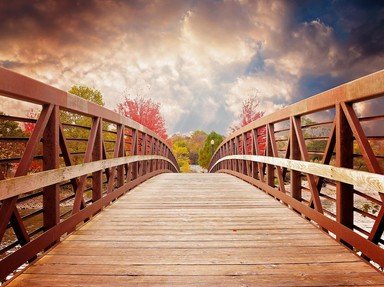Quiz Answer Key and Fun Facts
1. During the Industrial Revolution, the East End of London experienced a boom in trade and became a major port. It was soon recognised that a new crossing of the River Thames was required downstream of London Bridge. What was the major requirement of such a new crossing?
2. In 1876, a committee was formed to establish the design of the new river crossing. The public were permitted to submit their designs, and over 50 were received. One such entry was from the man who designed London's sewer network. What was his name?
3. In 1884 a design for the new bridge submitted by Horace Jones was approved. Jones' engineer, Sir John Wolfe Barry, came up with the idea of a bascule bridge. What does the word bascule mean?
4. Construction of the bridge began in 1886. It was made of steel and consisted of two towers built on piers. The central span was split into two equal bascules or leaves and the towers were clad in stone to give a more "traditional" appearance to match which nearby landmark?
5. To accommodate tall river traffic, the two equal bascules or leaves of Tower Bridge are raised when required. How was this achieved originally?
6. The two steam engines that ultimately enabled the raising and lowering of the bascules were eventually replaced by more modern sources of power and were decommissioned in 1976. What became of them?
7. Connecting the two towers of the bridge are two high-level walkways that were originally open to the public. In 1910 the walkways were closed. What was one reason for this?
8. An incident in 1968 involving Tower Bridge led to the arrest of Alan Pollock. What did he do?
9. River traffic on the Thames is not what it used to be, so the bridge is rarely raised these days.
10. Today, how many people (including those in vehicles) cross Tower Bridge every day?
Source: Author
keanet
This quiz was reviewed by FunTrivia editor
stedman before going online.
Any errors found in FunTrivia content are routinely corrected through our feedback system.

